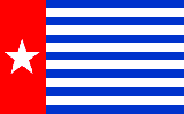As Indonesia grows richer, domestic migration between the country’s five major islands and 30 smaller island clusters, which feature as many as 1,000 distinct ethnic groups, is causing rising political tension and driving concerns about environmental degradation.
Transmigration has been an Indonesian story since the Dutch colonial government in the early 19th century started moving people in an attempt to reduce the crowding on Java and provide a work force for Sumatran plantations. Although it ceased toward the end of the Dutch colonial period, it was revived following independence during Sukarno’s presidency. At its peak, with funding from the World Bank, between 1979 and 1984, 535,000 families, or almost 2.5 million people, were moved.
Often the locals on the other islands saw the program as an effort by the Java-based central government to extend its economic and political control. In some parts of the country, transmigration led to savage violence, most recently in 2000 when, in the wake of President Suharto’s fall, Dayak tribesmen in Kalimantan butchered hundreds of ethnic Madurese.
The current flashpoint is Papua, where the heavy flow of migrants from other parts of Indonesia has contributed significantly to the island’s economic growth but also to the rising political temperature, with some of the local population now demanding independence. Papuans are mostly Christians. Racially they are also different from the majority of Indonesians, and economically they are not as well off. However, their island has extensive natural resources, which masses of new arrivals are seeking to exploit.
As a result, the island’s racial and religious composition has begun to change quickly and markedly. According to the 2000 Indonesian census, Javanese migrants made up 12.5 percent of the population in Papua. The percentage was even higher in urban areas, at 16.4 percent. Muslims formed 24.2 percent of the population; in urban areas they were 42.7 percent.
This phenomenon is not unique to Papua. In many countries, the heavy flow of migrants has quickly changed the composition of populations. Suddenly, the locals are shocked to find that they are living in a different world. Migrants are often motivated to work harder than locals. Not surprisingly, that leads to success, causing jealousy among the locals. Social unhappiness can worsen if the migrants have different religious, ethnic or racial backgrounds.
Migration played an important part in the bloody independence struggle in East Timor. Like Papua, East Timor, with its Portuguese colonial background, was comprised mostly of Christians. After Indonesia integrated East Timor in 1975, the province began to grow economically. As with Papua, the heavy flow of migrants, with different religious and racial backgrounds, was one of the important factors in Timor’s economic growth.
Furthermore, as in Papua, the migrants performed relatively better, both economically and politically, alienating the local population despite the economic uplift. The locals saw themselves marginalized. The 1997-98 Asian financial crisis, which hit Indonesia hard, was the trigger for the fall of Suharto’s New Order regime, which then allowed for the 1999 referendum, in which the East Timorese voted for independence.
The impact of migration has also been felt on Bali, which previously was populated mostly by Balinese Hindus. Prosperity and peace attracted not only legions of tourists, but also migrants who came to live and work on the island.
Not surprisingly, these migrants have changed Bali’s ethnic and religious composition, as many are neither Balinese nor Hindu. Some enclaves of non-Balinese in Denpasar raise concerns on the part of some locals about Bali’s changing identity and the role of Balinese Hindus.
In 2000, the Balinese comprised 88.9 percent of the population but only 81.4 percent in urban areas.
Riau Islands province, bordering Singapore, may face a similar challenge. Malays in the province claim that they are “purer” ethnic Malays than those in the neighboring province of Riau. However, the economic attractiveness of the province, given its proximity to Singapore, the richest economy in the region, has attracted a heavy flow of migrants.
And although Malays remain the largest ethnic group in the Riau Islands overall, in some places, such as Batam, ethnic Malays are now outnumbered by Javanese. Despite the rapid change in ethnic composition, the religious composition has changed less because most of the migrants from within Indonesia are Muslims. In 2000, Muslims still comprised 88.6 percent of the population in the province, even though only 37.7 percent of the population were ethnic Malays.
As transportation links and the communication system improve and as awareness grows that there may be a better life nearby, Indonesians are gaining the increasing ability to migrate. As the changing religious and ethnic compositions in Papua, Bali and the Riau Islands indicate — and from the lessons of East Timor — migration has the potential to become a threat to stability. It is an issue the government must take into consideration.
Asia Sentinel
Aris Ananta is a senior research fellow at the Institute of Southeast Asian Studies in Singapore.
